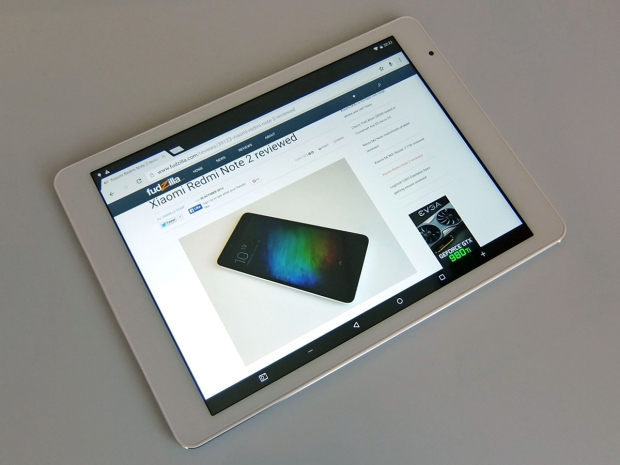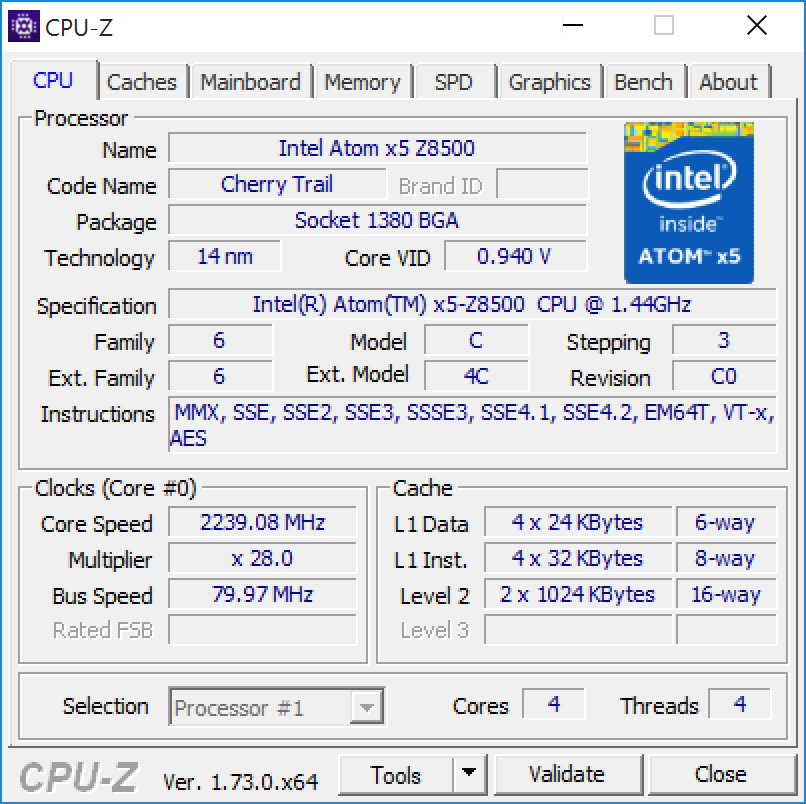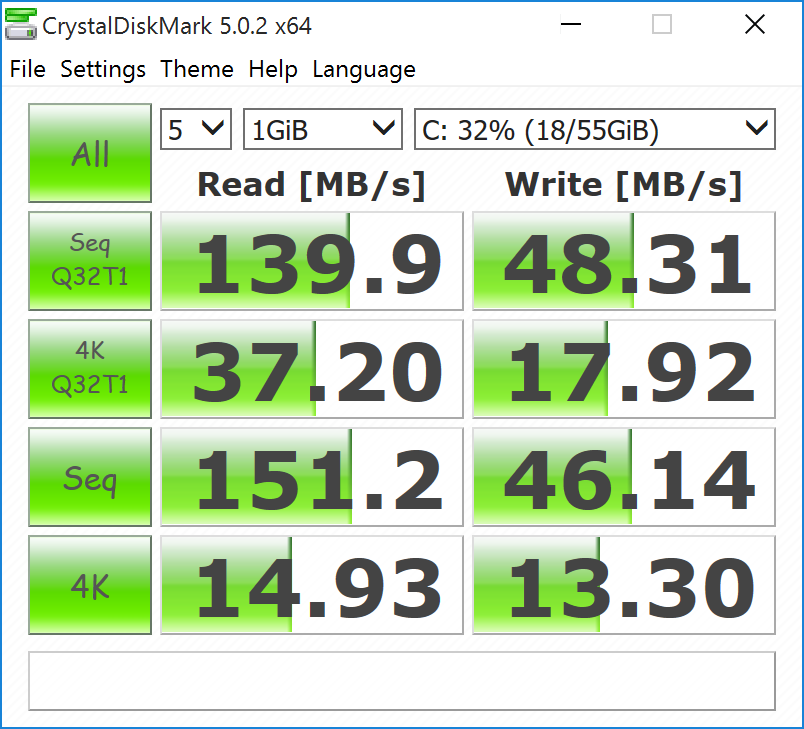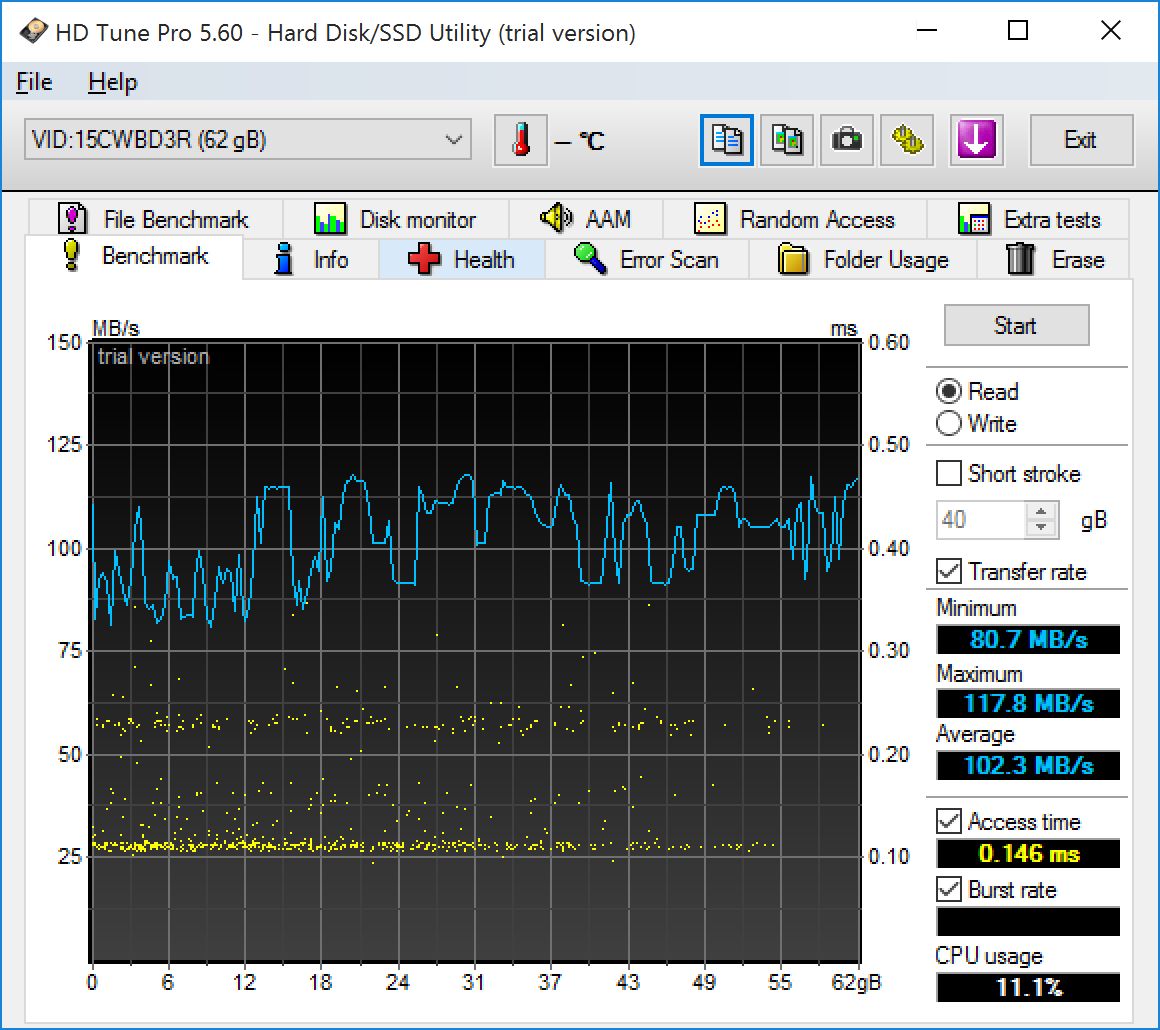Index
Review: Beefed up GPU trumps Bay Trail
It’s been almost two years since we reviewed our first device based on Intel’s Bay Trail Atom System-on-Chop (SoC). Obviously, it’s time for a refresh, and it comes in the form of the eagerly anticipated Cherry Trail platform. To be more precise, Atom x5- and x7-series parts, codenamed Cherryview, are the new 14nm chips, while x3 branding is reserved for SoFIA chips.
Cherryview/Cherry Trail products are based on the Airmont microarchitecture, which isn’t entirely new. Airmont is a 14nm shrink of Silvermont, which is used in Bay Trail. There is really no need to explain why the move from 22nm to 14nm is important, especially in mobile chips; it enables Intel to reach for higher clocks while maintaining the same TDP/SDP as on slower, previous generation chips.
However, it’s important to distinguish between Airmont and Cherry Trail. Although the Airmont CPU is a die-shrink, it is just part of the new SoC package. The other part, which is entirely new, is the GPU.
Cherry Trail utilises the latest Intel GPU available, the Gen8 architecture employed in Broadwell processors. Bay Trail used Ivy Bridge graphics, and it had to make do with just 4 execution units (EUs). Cherry Trail-based Atom x5 and Atom x7 parts pack 12 to 16 EUs respectively. The Atom x7 Z8700 is best known as the SoC behind Microsoft’s Surface 3 tablet.

However, today we will be taking a look at Teclast's X98 Pro tablet, based on the Atom x5 Z8500 SoC, which is bound to end up in a lot more devices than the x7. In addition to the x5 Z8500, Intel currently offers the marginally slower Atom x5 Z8300, which we reviewed a month ago. Both chips have the same 1.44GHz base clock, but on Turbo the Z8500 can hit 2.24GHz, while its little brother maxes out at 1.84GHz. They are priced at $25 and $20 respectively, while the x7 Z8700 costs $35. These may not sound like big differences, but in the era of commoditised tablets, a $10-20 difference means a lot from a BoM perspective.
There aren’t that many Cherry Trail devices on the market right now. A number have been announced, but few are actually shipping. We managed to get our hands on an inexpensive iPad-esque tablet from Teclast, which features the new platform, and we suspect the rest of the spec will be quite similar on big-brand devices as well.
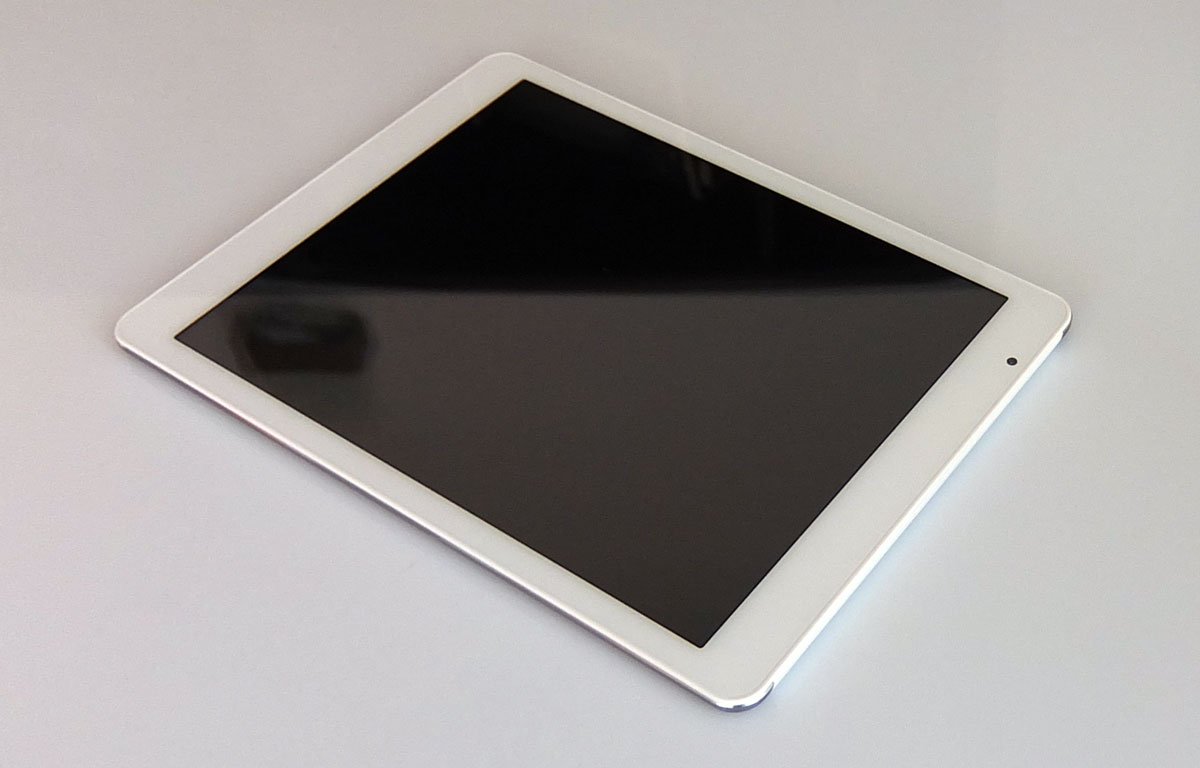
The Teclast X98 Pro is based on the Atom x5 Z8500, backed by 4GB of DDR3 RAM and 64GB of storage. The tablet ships as a dual-boot system, and it’s priced at $230 with free shipping (customs and tax may apply).
Before we get to the benchmarks, let’s take a closer look at the device.
Design and Build Quality
With a 4:3 9.7-inch 2048 x 1536 (QXGA) display, it’s obvious the Teclast X98 Pro takes its design cues from Apple’s iPad. It measures 239 x 169 x 8mm (9.39 x 6.64 x 0.31 inches) and weighs 526 grams, so it’s not as slim and sleek as the iPad, but it’s not chubby, either.
The chassis is aluminium, although the finish does not match Apple’s in terms of quality. The back is broken up by a piece of plastic trim, which houses antennas and the 5-megapixel camera.

The buttons aren’t aluminium either, they are plastic, and they could have been a bit better.

While the metal finish may not be as good as on iPads, it’s still not bad. It feels quite good and our biggest complaints have nothing to do with the finish or build, but rather with the branding and regulatory stuff at the back. There’s just too much text back there, and it doesn’t look good.

As far as aesthetics go, there is really not a lot we can say. For better or for worse, this is an iPad clone, which may be a good thing among some consumers, and a bad thing among others. This is entirely subjective, although we feel the iPad clone look is played out and using a somewhat different design to differentiate the design from the competition would probably help Teclast in some markets.

It is also important to note that Teclast does not state what sort of glass is used on the screen. It’s obviously not Gorilla Glass, as this would be a good selling point and the company probably wouldn’t forget to mention it. The screen is not laminated, either, and there appears to be no oleophobic coating on the glass. This is more or less the norm when it comes to budget tablets, so we won’t hold it against this particular device. On the upside, Teclast uses an IGZO panel from LG, so display quality is very good.

Micro USB, 3.5mm audio and micro HDMI ports are located at the bottom.

The exposed microSD slot and microphone are on the left.

No ports on buttons on the right, but at least you can check out the viewing angles.
Teclast X98 Pro Specs and Performance
Now we get to the meaty part: Intel Cherry Trail performance. Before we proceed to our benchmark scores, let’s list the full Teclast X98 Pro spec:
- SoC: Intel Atom Atom Z8500, 14nm
- CPU: Four 64-bit x86 cores (Airmont) clocked at 1.44GHz to 2.24GHz
- GPU: 8th generation Intel HD Graphics, 12 EUs, clocked at 200MHz to 600MHz
- RAM: 4GB LPDDR3
- Storage: 64GB internal eMMC 4.51, micro SD slot w UHS support
- OS: Windows 10 and Android 5.0
- Rear camera: 5-megapixel OmniVision sensor
- Front facing camera: 2-megapixel sensor
- Battery: 8000mAh lithium ion
- Dimensions: 239 x 169 x 8mm (9.39 x 6.64 x 0.31 inches)
- Weight: 526g (1.15lbs)
- Connectivity: 802.11b/g/n WiFi, Bluetooth, HDMI, OTG
A couple of things stand out in this list. There’s no mobile data, although we suspect it will be integrated in future models. While you get a cutting-edge SoC package, you don’t get the latest eMMC 5.0 storage. All this is understandable on a budget device and it’s no big deal. Our biggest problem is the lack of an ambient light sensor, which would help extend battery life and improve user experience by dimming the screen automatically. Budget or not, a tablet needs this cheap and useful sensor.
Despite these foibles, all the building blocks of a high-performance Wintel tablet are here, so let’s see what Cherry Trail can do.
Since Airmont is a die-shrink of Silvermont, there are no spectacular improvements in CPU performance. Slightly higher clocks help in CPU-bound benchmarks, but don’t expect any miracles, especially not in sustained performance, when both parts start throttling.
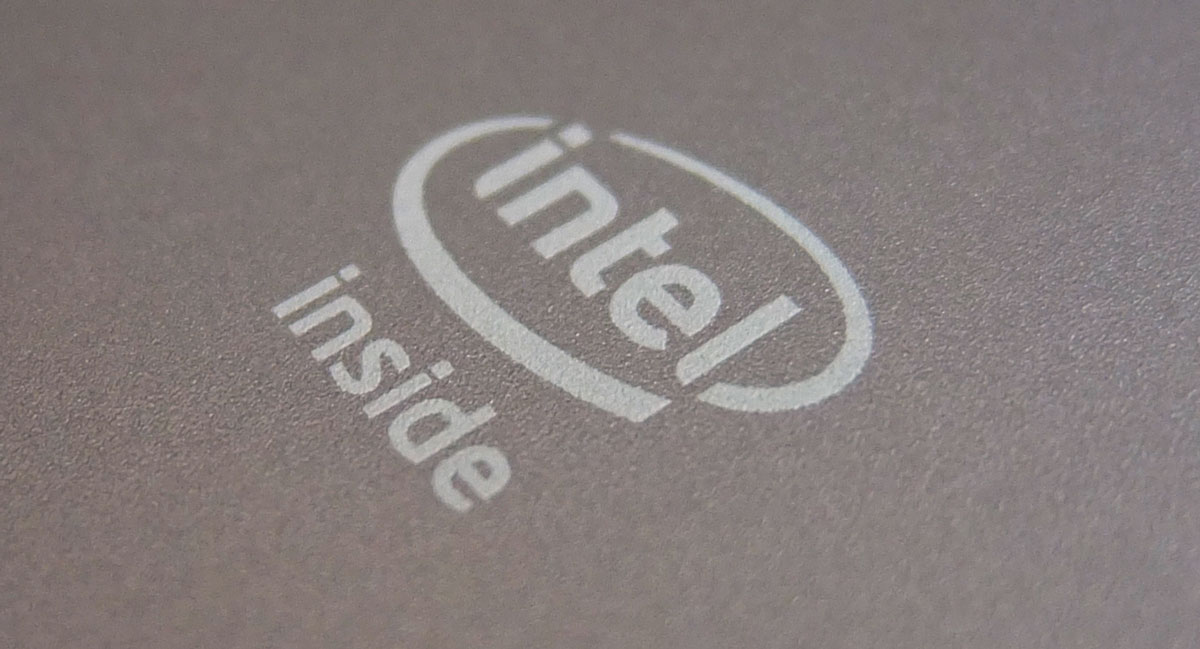
The addition of 4GB of RAM will make a bigger difference in everyday tasks than a somewhat higher CPU clock. With more RAM, there’s less digging though storage that has to be done, which is always good. However, even though Telcast uses eMMC 4.51 storage in the X98 Pro, our tests indicate the transfers speeds are not bad at all. In fact, looking at external reviews of the Surface 3, we can conclude that Teclast is roughly on a par with Microsoft’s tablet, which is good news considering the huge price gap between these two devices.
So, if the CPU isn’t much faster, what exactly makes Cherry Trail so different? Well, Intel used the die area and thermal envelopes made possible by the 14nm node to integrate a vastly more powerful GPU in the new SoC. GPU performance is the key difference between Bay Trail and Cherry Trail.
Our benchmarks indicate the difference is truly staggering: We are looking at a twofold to threefold boost in most tests and real-life applications. For example, we tried WoT Blitz on a Bay Trail tablet and the review sample, demonstrating a huge performance gap between the two platforms. On the Bay Trail device, we usually got 23-28 FPS on Low detail settings, while the Cherry Trail-based Teclast had no trouble delivering 45-55FPS on High detail settings, with loads of additional eye candy features enabled. This is obviously a good score, considering the 2048x1536 resolution and the fact that WoT Blitz is a very demanding title.
This is great news for Intel and end-consumers. Bay Trail was a good performer, and when it launched, the four Ivy Bridge EUs could keep up with most GPUs used in high-end ARM processors at the time, such as Qualcomm’s Adreno 320. However, that was almost two years ago, and by today’s standards Bay Trail’s GPU is mid-range at best (at this point we are just being kind here). Cherry Trail’s Gen8 GPU, with three times as many EUs and a newer architecture, is a different beast. Basic Windows benchmarks indicate that the new GPU is a good performer that should stand the test of time better than Bay Trail’s GPU. In Android, the sample performed much better.
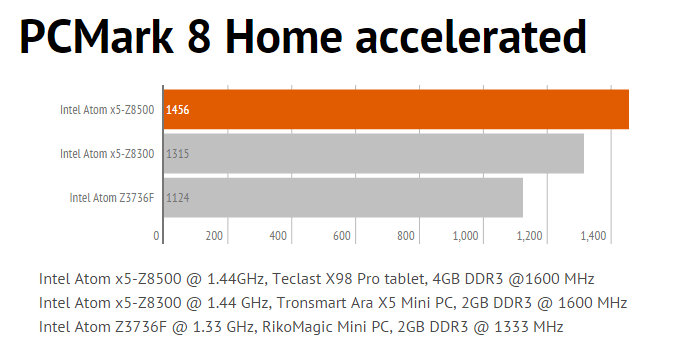
So far so good, but once you get deeper into it, things turn for the worse. Throttling was our biggest problem with this test unit, especially in GPU-bound tests. Although the 14nm node allowed Intel to stick more transistors into this tiny SoC package and beef up the GPU, it did not do wonders in the thermal department. Sure, you can expect a lot more from 14nm processors, but the idea behind Cherry Trail wasn’t to simply make it more efficient than its 22nm predecessor; it’s supposed to be a better performer as well, especially in the GPU department.
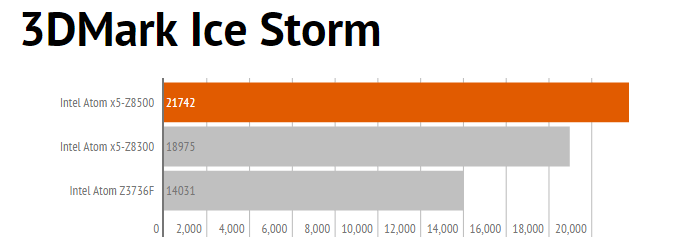
This is the Windows 3Dmark score, and it's not very impressive. However, we had more luck in Android, with a score of 24606 (Unlimited).

This means the new SoC has the exact same scenario design power (SDP) as comparable Bay Trail SKUs, albeit with a slight clock bump. On full blast, the added 8 EUs can generate quite a bit of heat, and we suspect Cherry Trail can heat up faster than Bay Trail in GPU-bound applications and benchmarks. The GPU was the bottleneck on Bay Trail parts, but on Cherry Trail it is not, so it can heat up in no time.
In CPU stress tests, the core temperature hits 85°C before the SoC starts throttling and cutting the CPU clock from 2.24GHz to 1.4GHz. This can take a few minutes and it’s nothing unusual on mobile parts. They are not designed for sustained performance and high Turbo clocks are only supposed to speed up application launches and other demanding tasks. Most of the time, the system doesn’t have to go into Turbo territory, because most people simply don’t use tablets for demanding productivity applications and games.
In Aida and Sandra, the new Cherry Trail SoC performs well.
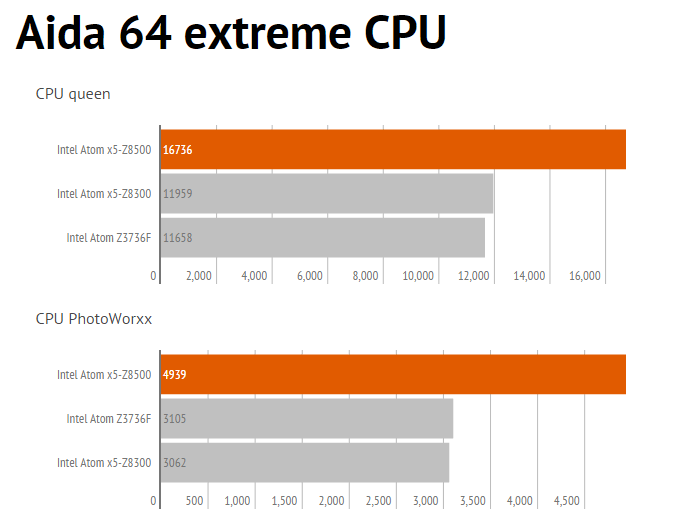
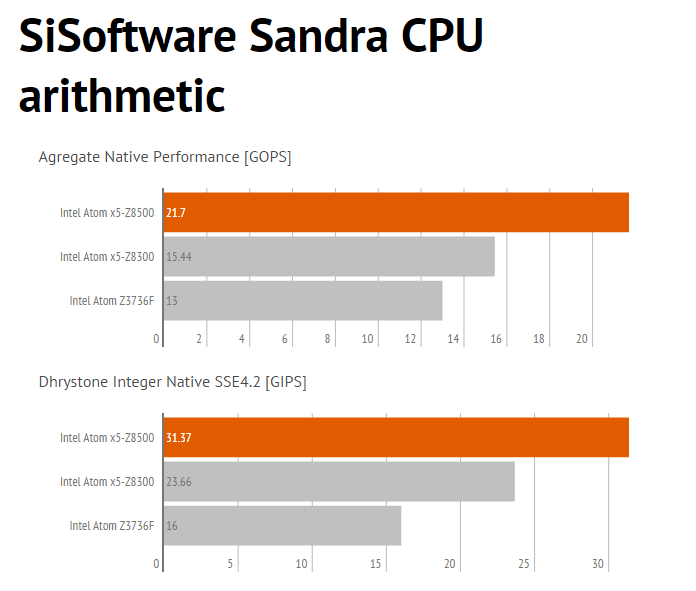
However, when we tried pushing the GPU to its limits using FurMark, things escalated much quicker. It was not a matter of minutes, as throttling started becoming apparent less than a minute into the test. The temperature went up in no time, and the clocks went down accordingly. This, of course, happens on Bay Trail and other mobile SoCs as well, but it’s a bitter pill to swallow, considering the threefold increase in EU count and the use of a new manufacturing node. It’s easy to argue that Cherry Trail will still outperform Bay Trail when it throttles its GPU, because it will, even at lower clocks, but that’s beside the point.
Once again, we should note that we are dealing with a pre-production hardware sample from a small, budget brand. It’s possible that Teclast cut some corners to ship these units as soon as possible, which would explain these issues to some extent. However, the company has been churning out Bay Trail tablets in the exact same chassis for a while, and we suspect it simply kept using the exact same cooling layout. It’s obviously not good enough, and while it could handle Bay Trail and its much smaller GPU, it simply fails to dissipate the heat generated by Cherry Trail’s 12 EUs. We suspect a lot of fine tuning in Windows needed, as the tablet did not exhibit nearly as many GPU performance issues in Android.
In Antutu, it outpaced Bay Trail devices by about 50%, and it beat the Moorefield processor in the Asus Zenfone 2 by about 10%
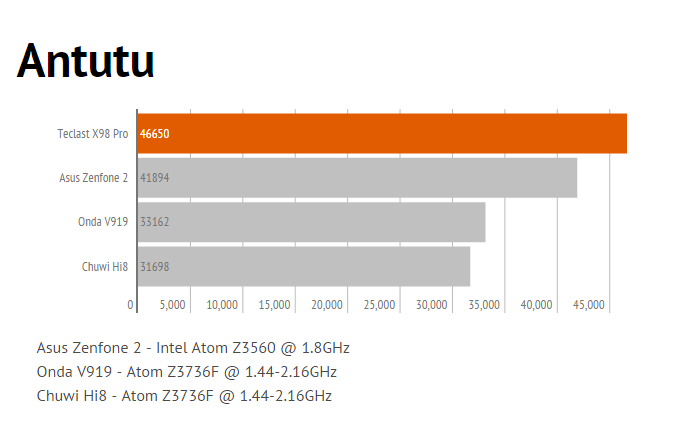
In Geekbench 3, we got an average multi-core test, but the single-core results were quite good.

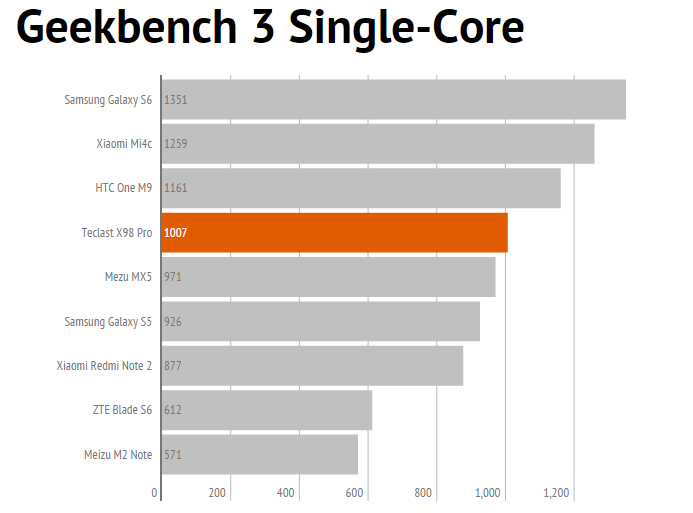
Ironically, while throttling is a problem for Teclast, it gives us chip geeks a chance to compare two generations of processors in the exact same chassis, with the same cooling, which is not something we get a chance to do often. It illustrates that Cherry Trail, despite its advanced 14nm node, may require better cooling than Bay Trail, to compensate for the added GPU muscle.
On the other hand, FurMark is a tad too much for a mobile device. If you use this tablet as any other tablet, for browsing and content consumption, you shouldn’t experience a lot of problems. However, if you want to run demanding games, you will encounter a lot of throttling.
Storage performance was adequate for this type of device, but by no means impressive.
Display, Audio and Imaging
The Teclast X98 features a very good 2048x1536 IGZO panel from LG, which translates into about 264ppi on 9.7 inches. It’s an IPS panel and viewing angles are good. We have no complaints about the brightness, either.
However, things could have been better. We can understand the lack of oleophobic coating and hardened glass in this price range, as well as the fact that the digitizer is not laminated, but the failure to include an ambient light sensor is a problem. It would have helped improve battery life and user experience. It’s not a huge deal if you use your tablet solely in your living room, but if you want to take it outside, or like to read in your bed, you’ll have to adjust the brightness manually.

On the audio front, the tablet has a weak speaker, which is disappointing given the good spec and snappy GPU that make gaming enjoyable. We’ve heard louder and clearer speakers on $100 phones. The microphone is average, but you can use a 3.5mm headset for the occasional Skype call, should you need it. Output via the 3.5mm port is loud and clear. The puny integrated speaker is definitely the weakest link here.

We don’t bother doing extensive imaging tests in tablet reviews because most people don’t use tablets to take a lot of photos. Still, the rear 5-megapixel camera based on an OmniVision sensor is actually quite good. It’s better than comparable units used on cheap tablets. The front-facing shooter is a 2-megapixel affair and it gets the job done. It’s good enough for video calls, but it’s not spectacular by any stretch of the imagination.
OS, UI and Everyday Use
We already pointed out that we received a pre-production sample with Windows 10 and Android 5.1.
In addition to being our first Cherry Trail tablet, this is also the first tablet we had a chance to test with Windows 10 out-of-the-box. We won’t spend too much time on Redmond’s new OS, but we will note that the user experience is somewhat better than on Windows 8.1 tablets. Quite a few issues have been addressed and Windows 10 appears to handle 2048x1536 displays much better than its predecessors. There is still room for improvement, and if you need to run legacy Windows applications on a small, high-res display, you will run into a few problems.
Performance is not an issue, unless you want to run benchmarks of Windows games. The user interface is smooth as silk in both operating systems, and there’s really not much to complain about. Windows 10 does take up quite a bit of room, so we ended up with about 29GB of free storage. The Android partition is 20GB in total, and the amount of available space depends on what you do with the preinstalled apps. That’s not bad, and you can add more storage using the microSD slot (which can handle fast UHS cards, too). The eMMC drive is relatively fast, and thanks to the 4GB of RAM, the X98 Pro is a good multitasker. The micro HDMI port at the bottom is a welcome addition as well.

In most respects, you simply forget this is a cheap tablet, because it punches above its weight in most everyday usage scenarios.
Switching between Windows and Android isn’t as straightforward as on some dual-boot devices we had a chance to test, and the boot menu is ugly. This doesn’t have an impact of performance, but it just goes to show that the device needs a bit more polish. We also don’t like the stock Teclast launcher, or the fact that it’s not easily replaceable.
While we did list a few glaring issues, such as the lack of an ambient light sensor and aggressive throttling in Windows, in everyday use the tablet performed quite well. Sure, these annoyances are hard to overlook, but at least you get good everyday performance. Throttling in Windows is a problem only if you run a lot of GPU-bound applications or benchmarks, but it doesn’t affect user experience while browsing or using basic productivity applications. Performance is better in Android, because there’s not nearly as much throttling to deal with. The launcher is smooth, but we just don’t like the layout, or the dozen or so bloatware apps (luckily almost all can be uninstalled in seconds).
Battery life should not be an issue, provided you don’t push it too hard. The 8000mAh battery is sufficient for about 5-6 hours of content consumption in Android (browsing, occasional video), but it really depends on the brightness, which isn’t controlled automatically. We expected more.
Although we are dealing with a new 14nm processor, don’t get too carried away – the display needs a lot of juice. Also, the powerful processor can consume just as much power under load as Bay Trail (although it will deliver superior performance). Here’s the problem: Cherry Trail can deliver superior sustained GPU performance due to its superior manufacturing process and additional EUs, but this means that under load it can consume more power than Bay Trail, because the latter would be forced to throttle sooner.
Conclusion
Intel’s new Atom x5 Z8500 SoC is a winner on paper, but in real life we were let down by Windows throttling issues on our review sample. We could have received a lemon lacking thermal paste, or it could be a problem with device driver optimisation. We suspect driver issues in Windows, but nonetheless we feel we didn’t get a chance to experience the x5 Z8500 in its full glory. That said, we did manage to get some great benchmark results with a cold device in Windows, along with good sustained performance figures in Android, which were enough to show off the chip’s potential, and we can conclude that the Atom x5 Z8500 is an excellent chip.
This particular Atom SKU supports up to 8GB of RAM, dual-channel memory, and boasts a powerful GPU with 12 EUs, yet it’s relatively inexpensive. We’ve already seen slower Cherry Trail parts in $100 devices and that’s what really matters – these chips are coming to commoditised Android and Windows tablets and mini PCs, yet they offer performance on a par with some high-end devices launched in the last year or so. The GPU performance boost is impressive and makes Intel’s platform a lot more attractive for Android gaming, not to mention cheap media boxes.
Bottom line: Intel has a winner on its hands, an inexpensive 14nm chip that will end up in tens of millions of commoditised Windows and Android devices, bringing excellent performance to the masses. Not everyone can afford a high-end tablet or PC, but Cherry Trail chips like the x5 Z8500 will allow cash strapped geeks around the world to enjoy a lot of performance on cheap devices, running the two most prolific operating systems on the planet.
As for the Teclast X98 Pro, we experienced a fair amount of throttling and felt the rest of the device couldn’t keep up with the processor. Hopefully this is just a kink, since we’re dealing with a pre-production sample.
Teclast X98 Pro Pros and Cons
Pros
- Excellent processor
- 4GB of RAM and 64GB of storage
- Display quality
- Value
Cons
- Loads of throttling in Windows
- Lack of ambient light sensor
- Weak speaker
- Battery life under heavy GPU load

